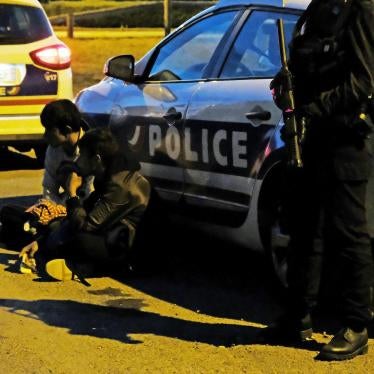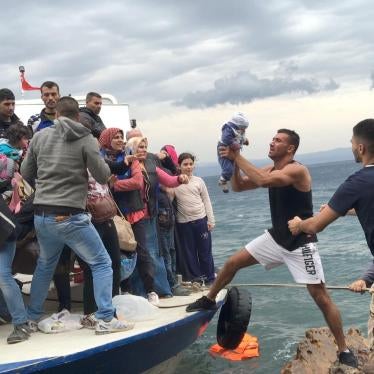Last week, 20,000 people – mostly refugees from Syria – crossed the Aegean Sea into debt-stricken Greece, a country with almost no capacity to receive them or process their asylum claims. So far this year, nearly 200,000 have landed on Greek shores, another 110,000 have arrived by sea to Italy and more than 120,000 by land to Hungary. Germany has just announced that it expects to receive 800,000 asylum applications in 2015.
Despite the European Union having a supposed common policy on asylum, members countries have instead responded with an “every man for himself” approach that has included deploying ever larger numbers of guards, putting up coils of razor wire on their borders, and engaging in rhetoric about “swarms” of “marauding migrants.”
The result: scenes of panic at borders, makeshift camps on holiday islands, and piles of bodies from people suffocating in trucks or drowning at sea.
During the early 2000s, when Europe was not facing a refugee crisis, the European Commission developed the Common European Asylum System. It rested on the idea that EU states would follow the same standards and procedures for identifying and protecting refugees and agree to a common level of reception conditions. On paper, all member states (except Denmark and Ireland) are to treat asylum seekers according to these rules.
The agreed system also included a crisis mechanism – temporary protection. Inspired by the large flow of refugees from Kosovo in the late 1990s, it was based on the idea that during a refugee emergency, time, energy, and resources shouldn’t be wasted on processing individual asylum claims, but should rather be spent on providing quick and efficient protection to those fleeing.
But there was a fly in the ointment of a harmonized system – the Dublin Rule – which held that generally the country of first arrival would be responsible for examining asylum claims. This was unfair to the countries of the periphery of the EU, who were the most likely to face a mass influx, and often had the least capacity to handle such flows.
It soon became evident that there were great disparities among member states – an asylum seeker in Bulgaria or Greece would face abysmal conditions and dysfunctional procedures, but could reasonably expect a chance for a fair hearing and decent living conditions if they could reach Sweden or Germany. With a few exceptions, those disparities have been allowed to continue for years.
So far, “harmonized” responses to the current crisis have focused primarily on enhancing border enforcement and combating smuggling. Although the EU laudably put greater resources into search and rescue efforts on the Mediterranean, it put the operation under the control of Frontex, the EU external border force, whose mandate is border management rather than humanitarian assistance. Outside of border-control cooperation, initiatives to forge a coordinated response have largely failed. In July, for example, EU ministers fell well short of a previous pledge to relocate a mere 40,0000 asylum seekers from Greece and Italy to other member states over a two-year period, only offering places for 32,500; that same month, 50,000 new arrivals hit Greek shores.
Germany has taken positive unilateral steps, such as announcing that it would suspend transfers of Syrians to Greece and other member states where they had first arrived, despite the Dublin Rule. Sweden does the same and other EU governments should follow suit.
Properly managed, and with a fair distribution among EU member states, the numbers of migrants and asylum seekers should not cause alarm. The 340,000 arrivals in the first half of 2015 are still less 0.1% of the EU’s population. Compare that with Lebanon, host to 1.2 million Syrian refugees – more than 25% of its population.
Instead of shirking and diverting responsibilities, the EU should overhaul its current “Dublin” approach, which puts an unfair burden on states along the EU’s external borders. It should properly implement its common asylum system in every member state, increase the paltry number of refugees it resettles, grant more humanitarian visas, and ease restrictions on family reunification.
Piecemeal approaches have proven ineffective, with deadly consequences. EU leaders should take seriously the need for cooperation, not to maintain a Fortress Europe, but to distribute responsibilities fairly and equitably as an expression of solidarity – not just within Europe, but with humanity.










